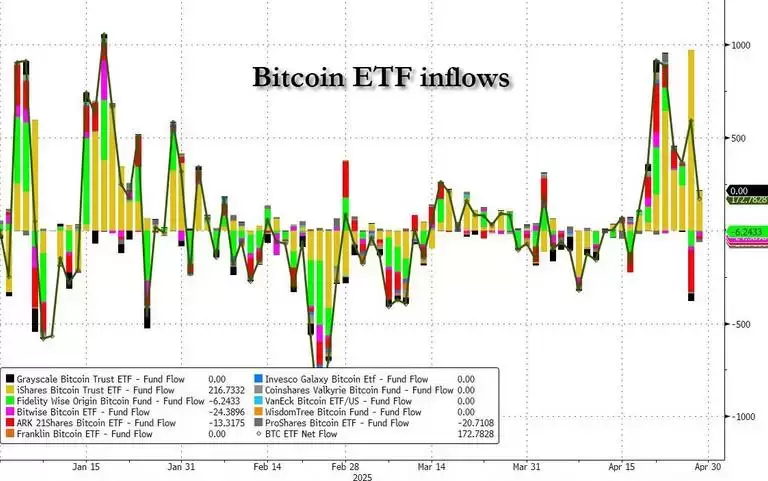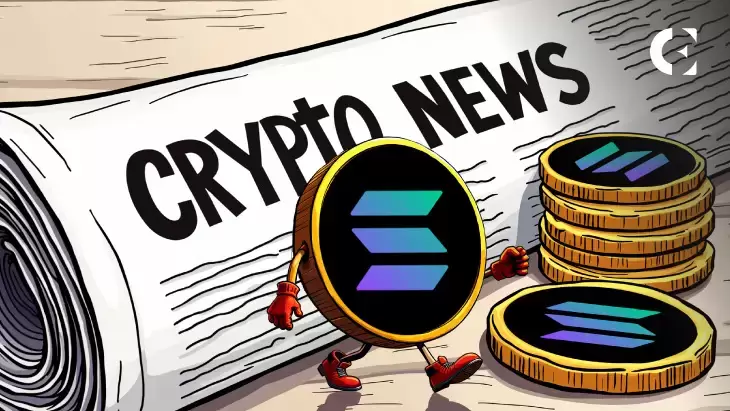 |
|
 |
|
 |
|
 |
|
 |
|
 |
|
 |
|
 |
|
 |
|
 |
|
 |
|
 |
|
 |
|
 |
|
 |
|
米国とヨーロッパの規制機関による最近の動きは、暗号通貨の使用に関するより簡単なガイドラインを作成しました。

Recently, there has been renewed interest in stablecoins, signaled by the involvement of “traditional” financial institutions.
最近、「伝統的な」金融機関の関与によって合図された、スタブコインへの新たな関心がありました。
Bank of America and Standard Chartered are considering launching their own stablecoin, joining JPMorgan, which launched its stablecoin, JPM Coin — now Kinexys Digital Payments — to facilitate transactions with their institutional clients on their blockchain platform, Kinexys (formerly Onyx).
Bank of AmericaとStandard Charteredは、独自のStablecoinの立ち上げを検討しており、JPMorganに参加しています。JPMorganは、StablecoinであるJPM Coin(現在はKinexys Digital Payments)を立ち上げ、ブロックチェーンプラットフォームのKinexys(旧Onyx)で機関のクライアントとの取引を促進します。
Mastercard plans to bring stablecoins to the mainstream, joining Bleap Finance, a crypto startup. The aim is to enable stablecoins to be spent directly onchain — without conversions or intermediaries — seamlessly integrating blockchain assets with Mastercard’s global payment rails.
MasterCardは、Stablecoinsを主流に持ち込み、CryptoのスタートアップであるBleap Financeに参加する予定です。目的は、スタブコインをコンバージョンや仲介者なしで直接オンチェーンで使用できるようにすることです。ブロックチェーンアセットをMasterCardのグローバル支払いレールとシームレスに統合することです。
In early April, Visa joined the Global Dollar Network (USDG) stablecoin consortium. The company will become the first traditional finance play to join the consortium.
4月上旬、VisaはGlobal Dollar Network(USDG)Stablecoin Consortiumに参加しました。同社は、コンソーシアムに参加した最初の伝統的な財務プレイになります。
In late March, NYSE parent Intercontinental Exchange (ICE) announced that it is investigating applications for using USDC USDCOIN stablecoin and US Yield Coin within its derivatives exchanges, clearinghouses, data services and other markets.
3月下旬、NYSE親Intercontinental Exchange(ICE)は、USDC USDCoin StablecoinとUSのデリバティブ交換、クリアリングハウス、データサービス、およびその他の市場内でコインを獲得するためのアプリケーションを調査していると発表しました。
Why the renewed interest in stablecoins?
なぜStablecoinsに新たな関心があるのですか?
The stablecoin landscape
Stablecoinの風景
There are over 200 stablecoins, mostly pegged to the US dollar. Two well-established stablecoins, Tether’s USDt USDTUSD, the oldest, launched in 2014, and USDC, launched in 2018, hold 65% and 28% of the stablecoins market cap, respectively — both are centralized fiat collateralized.
200を超えるスタブコインがあり、ほとんどが米ドルに固定されています。 2014年に発売された最古のTetherのUSDT USDTUSD、2018年に発売された2つの定評のあるStablecoins、USDTUSDは、それぞれStablecoinsの時価総額の65%と28%を保持しています。
Recent: Crypto wanted to overthrow banks, now it’s becoming them in stablecoin fight
最近:Cryptoは銀行を転覆したかった、今ではStablecoinの戦いで彼らになっている
In third place is a relatively new one, USDe, which launched in February 2024, with about 2% of the stablecoin market cap and has an unconventional mechanism based on derivatives in the crypto market. Although it runs on a DeFi protocol on Ethereum, it incorporates centralized features since centralized exchanges hold the derivatives positions.
3位には、2024年2月に発売された比較的新しいUSDEであり、安定した時価総額の約2%で、暗号市場の派生物に基づいた型破りなメカニズムがあります。イーサリアムのdefiプロトコルで実行されますが、集中交換がデリバティブの位置を保持しているため、集中機能が組み込まれています。
There are three primary mechanisms of stablecoins:
スタブコインには3つの主要なメカニズムがあります。
Centralized, fiat-collateralized: A centralized company maintains reserves of the assets in a bank or trust (e.g., for currency) or a vault (e.g., for gold) and issues tokens (i.e., stablecoins) that represent a claim on the underlying asset.
中央集権化された、フィアットコラライゼーション:集中企業は、銀行または信託(通貨など)または金庫(金の場合)の資産の準備金を維持し、基礎となる資産の主張を表すトークン(つまり、stablecoins)を発行します。
Decentralized, cryptocurrency-collateralized: A stablecoin is backed by other decentralized crypto assets. One example can be found in the MakerDAO stablecoin Dai DAIUSD, which is pegged to the US dollar and encapsulates the features of decentralization. While a central organization controls centralized stablecoins, no one entity controls the issuance of DAI.
分散化された、暗号通貨の協力化:スタブコインは、他の分散型暗号資産に支えられています。 1つの例は、Makerdao Stablecoin Dai Daiusdにあります。これは、米ドルに固定され、分散化の特徴をカプセル化します。中央組織は集中化されたスタブコインを制御しますが、DAIの発行を制御するエンティティはありません。
Decentralized, uncollateralized: This mechanism ensures the stability of the coin’s value by controlling its supply through an algorithm executed by a smart contract. In some ways, this is no different from central banks, which also don’t rely on reserve assets to keep the value of their currency stable. The difference is that central banks, like the Federal Reserve, set a monetary policy publicly based on well-understood parameters, and its status as the issuer of legal tender provides the credibility of that policy.
分散化された、類似のない:このメカニズムは、スマートコントラクトによって実行されたアルゴリズムを介して供給を制御することにより、コインの値の安定性を保証します。ある意味では、これは中央銀行と変わりません。これは、通貨の価値を安定させるために予備資産に依存していません。違いは、中央銀行は、連邦準備制度と同様に、よく理解されているパラメーターに基づいて金銭政策を公に設定し、法定通貨の発行者としての地位がその政策の信頼性を提供することです。
Depegging, risk and fraudsters
減衰、リスク、詐欺師
Stablecoins are supposed to be stable. They were created to overcome the inherent volatility of cryptocurrencies. To maintain their stability, stablecoins should (1) be pegged to a stable asset and (2) follow a mechanism that sustains the peg.
スタブコインは安定しているはずです。それらは、暗号通貨の固有のボラティリティを克服するために作成されました。安定性を維持するには、(1)安定した資産に固定し、(2)PEGを維持するメカニズムに従う必要があります。
If stablecoins are pegged to gold or electricity, they will reflect the volatility of these assets and thus may not be the best choice if you are seeking a no-risk (or close to no-risk) asset.
Stablecoinsが金または電気に固定されている場合、これらの資産のボラティリティを反映するため、リスクのない(またはリスクに近い)資産を求めている場合、最良の選択ではない場合があります。
USDe maintains a peg to the USD through delta hedging. It uses short and long positions in futures, which generates a 27% yield annually — significantly higher than the 12% annual yield of other stablecoins pegged to the USD. Derivative positions are considered risky — the higher the risk, the higher the return. Therefore, it encapsulates an inherited risk due to its reliance on derivatives, which runs counter to the purpose of stablecoins.
USDEは、デルタヘッジを介してUSDのペグを維持しています。先物で短いポジションとロングポジションを使用しており、年間27%の利回りを生み出します。デリバティブの位置はリスクと見なされます - リスクが高いほど、リターンが高くなります。したがって、硬直性への依存により、stablecoinsの目的に対抗するため、継承されたリスクをカプセル化します。
Stablecoins have been around for more than a decade. During this time, there were no major depegging fiascos other than the case of Terra. The collapse of Terra was not the result of a reserve problem or mechanism but rather the act of fraudsters and manipulators.
Stablecoinsは10年以上前から存在しています。この間、テラの場合以外の主要な下垂体フィアスコはありませんでした。テラの崩壊は、予備の問題やメカニズムの結果ではなく、詐欺師やマニピュレーターの行為でした。
TerraUSD (UST) had a built-in arbitrage mechanism between UST and the Terra blockchain native coin, LUNA. To create UST, you needed to burn LUNA.
Terrausd(UST)には、USTとTerraブロックチェーンネイティブコイン、Lunaの間に組み込みのアービトラージメカニズムがありました。 USTを作成するには、ルナを燃やす必要がありました。
To entice traders to burn LUNA and create UST, the creators of the Terra blockchain offered a 19.5% yield on staking, which is crypto terminology for earning 19.5% interest on a deposit, through what they called the Anchor protocol.
トレーダーを誘惑してルナを燃やし、USTを作成するために、Terraブロックチェーンの作成者は、アンカープロトコルと呼ばれるものを通じて、預金の19.5%の利息を獲得するための暗号用語であるステーキングの19.5%の利回りを提供しました。
Such a high interest rate is simply not sustainable. Someone has to borrow at such a Trump administration executive order 14067, "Strengthening American Leadership in Digital Financial Technology
このような高金利は、単に持続可能ではありません。誰かがそのようなトランプ政権大統領令14067で借りなければならない」、「デジタル金融技術におけるアメリカのリーダーシップの強化
免責事項:info@kdj.com
提供される情報は取引に関するアドバイスではありません。 kdj.com は、この記事で提供される情報に基づいて行われた投資に対して一切の責任を負いません。暗号通貨は変動性が高いため、十分な調査を行った上で慎重に投資することを強くお勧めします。
このウェブサイトで使用されているコンテンツが著作権を侵害していると思われる場合は、直ちに当社 (info@kdj.com) までご連絡ください。速やかに削除させていただきます。
-
![ビットコイン[BTC]は97,000ドルを超えて急増し、重要なレベルを取り戻し、市場全体で強気の勢いを強化します。 ビットコイン[BTC]は97,000ドルを超えて急増し、重要なレベルを取り戻し、市場全体で強気の勢いを強化します。](/assets/pc/images/moren/280_160.png)
-

-

-

-

-

-

- ソラナ生態系のネイティブの暗号通貨であるソルは、精査されています
- 2025-05-03 07:05:13
- 入力:ソラナ生態系のネイティブ暗号通貨であるSolは、比較的ひどいパフォーマンスに続いて精査されています
-

-


















































![ビットコイン[BTC]は97,000ドルを超えて急増し、重要なレベルを取り戻し、市場全体で強気の勢いを強化します。 ビットコイン[BTC]は97,000ドルを超えて急増し、重要なレベルを取り戻し、市場全体で強気の勢いを強化します。](/uploads/2025/05/03/cryptocurrencies-news/articles/bitcoin-btc-surges-reclaiming-critical-level-reinforcing-bullish-momentum-market/middle_800_480.webp)






